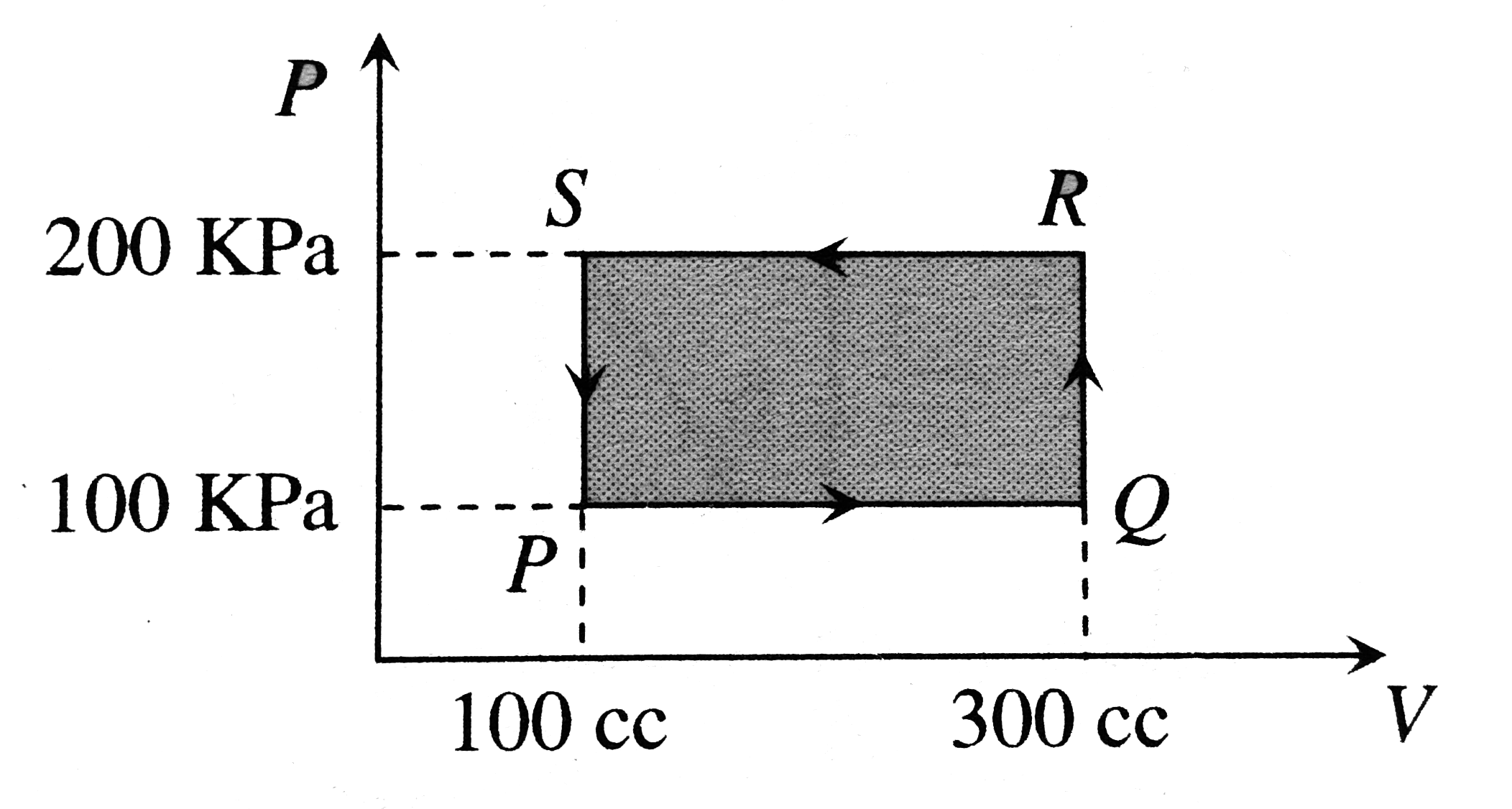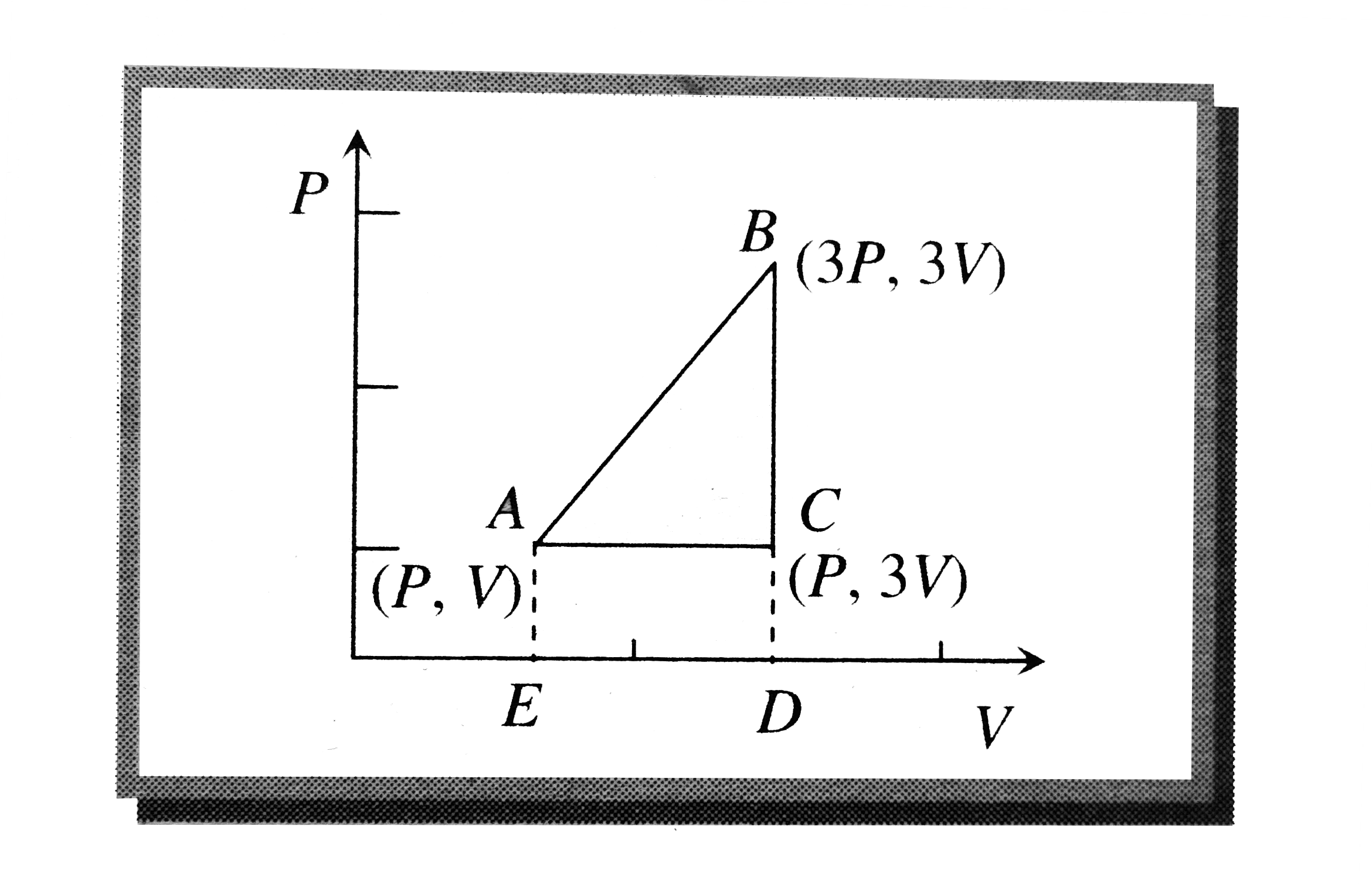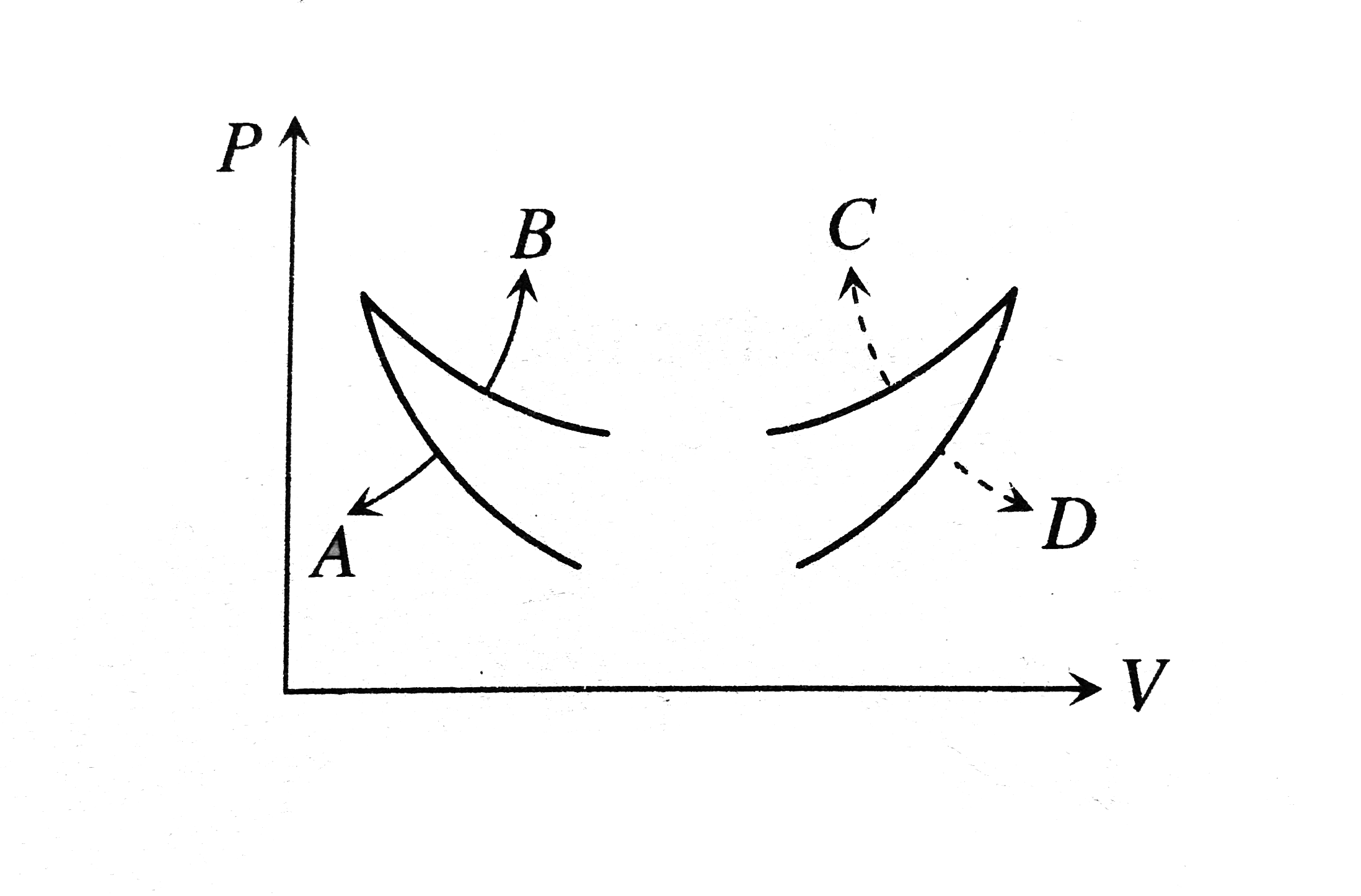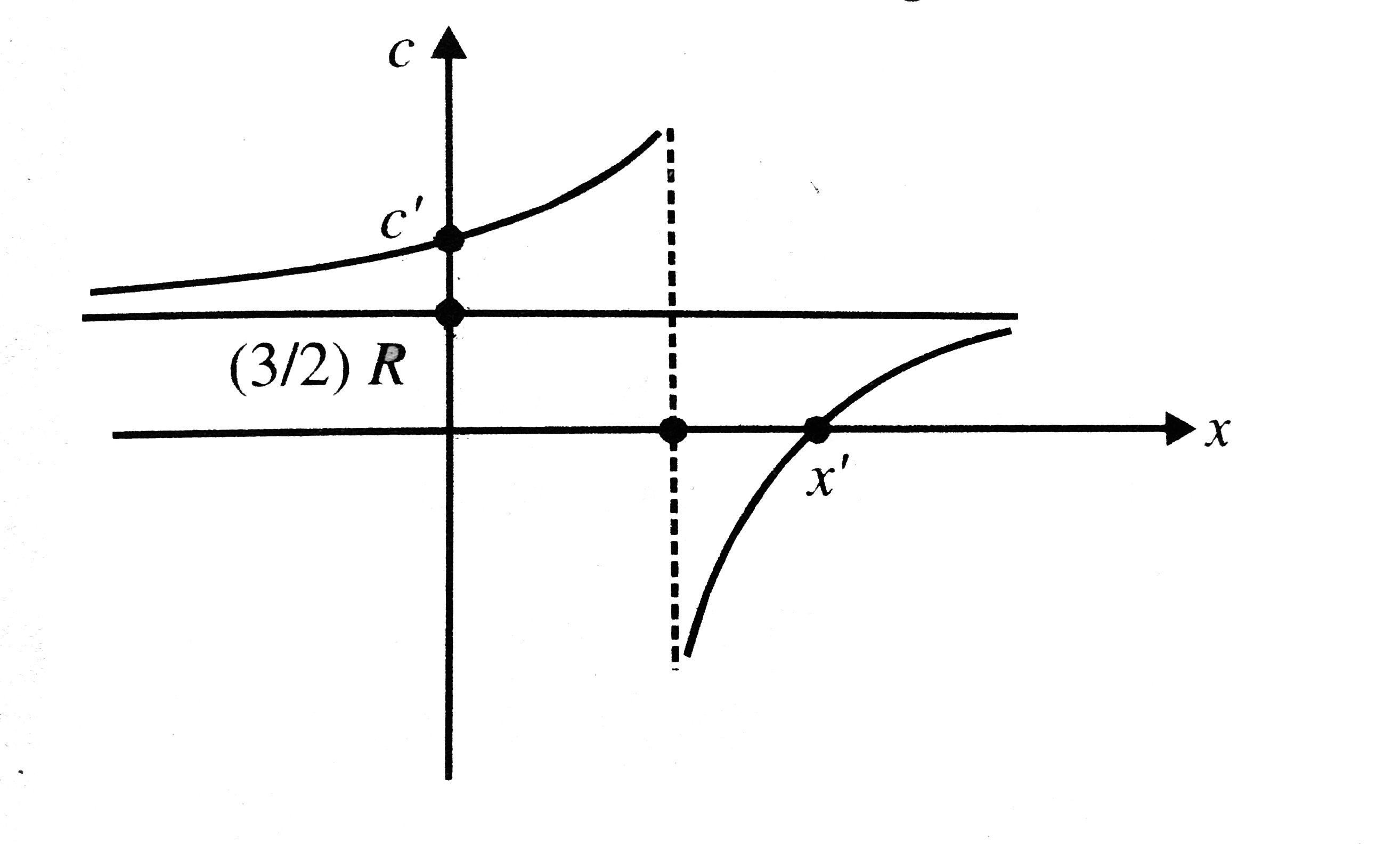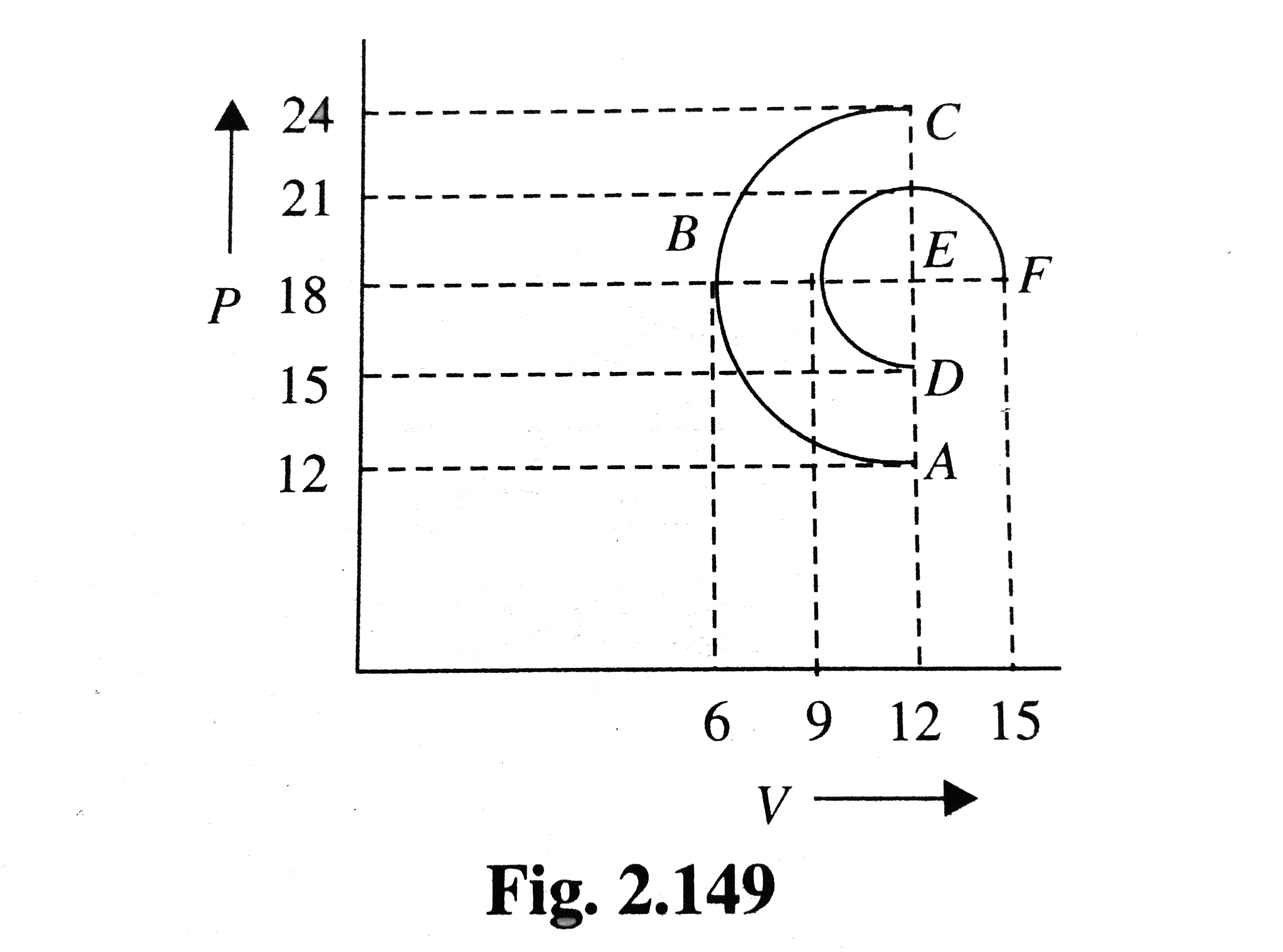Single Correct from CENGAGE PHYSICS Chapter 12 KINETIC THEORY OF GASES AND FIRST LAW OF THERMODYNAMICS for Class 11
| Class 11 | PHYSICS |
| Chapter | KINETIC THEORY OF GASES AND FIRST LAW OF THERMODYNAMICS |
| CENGAGE PHYSICS | Single Correct |
| Medium | English |
| Academic Year | 2023-2024 |
Question 8
An ideal monoatomic gas is confined in a cylinder by a spring-loaded piston of cross-section 8.0×10−3m2. Initially the gas is at 300K and occupies a volume of 2.4×10−3m3 and the spring is in its relaxed (unstretched, unompressed) state, fig. The gas is heated by a small electric heater until the piston moves out slowly by 0.1m. Calculate the final temperature of the gas and the heat supplied (in joules) by the heater. The force constant of the spring is 8000N/m, atmospheric pressure is 1.0×105Nm−2. The cylinder and the piston are thermally insulated. The piston is massless and there is no friction between the piston and the cylinder. Neglect heat loss through lead wires of the heater. The heat capacity of the heater coil is negligible. Assume the spring to be massless.
 View Solution
View SolutionQuestion 15
Two gases occupy two containers A and B then gas in A, of volume 0.10m3, exerts a pressure of 1.40Mpa and that in B, of volume 0.15m3, exerts a pressure 0.7MPa. The two containers are joined by a tube of negligible volume and the gases are allowed to intermingle. Then if the temperature remains constant, the final pressure in the container will be (in MPa)View SolutionQuestion 35
A thermodynamic process is shown in Fig. The pressures and volumes corresponding to some points in the figure are : PA=3×104Pa,PB=8×104Pa and VA=2×10−3m3,VD=5×10−3m.
In process AB,600J of heat is added to the system and in process BC,200J of heat is added to the system. The change in internal energy of the energy of the process AC would be.
 View Solution
View SolutionQuestion 45
At 100∘C the volume of 1kg of water is 10−3m3 and volume of 1kg of steam at normal pressure is 1.671m3. The latent heat of steam is 2.3×106J/kg and the normal pressure is 105N/m2. If 5kg of water at 100∘C is converted into steam, the increase in the internal energy of water in this process will beView SolutionQuestion 56
Three processes compose a thermodynamic cycle shown in the accompanying P−V, diagram of an ideal gas.
Process 1→2 take place at constant temperature, during this process 60J of heat enters the system.
Process 2→3 takes place at constant volume. During this process 40J of heat leaves the system.
Process 3→1 is adiabatic.
What is the change in internal energy of the during process 3→1? View Solution
View SolutionQuestion 58
A sample of an ideal gas is taken through the cyclic-process ABCA shown in Fig. It rejects 50J of heat during the part AB, doens not absorb or reject the heat during BC, and accepts 70J of heat during CA. Forty joules of works is done on the gas during the part BC. The internla energies at B and C, respectively, will be
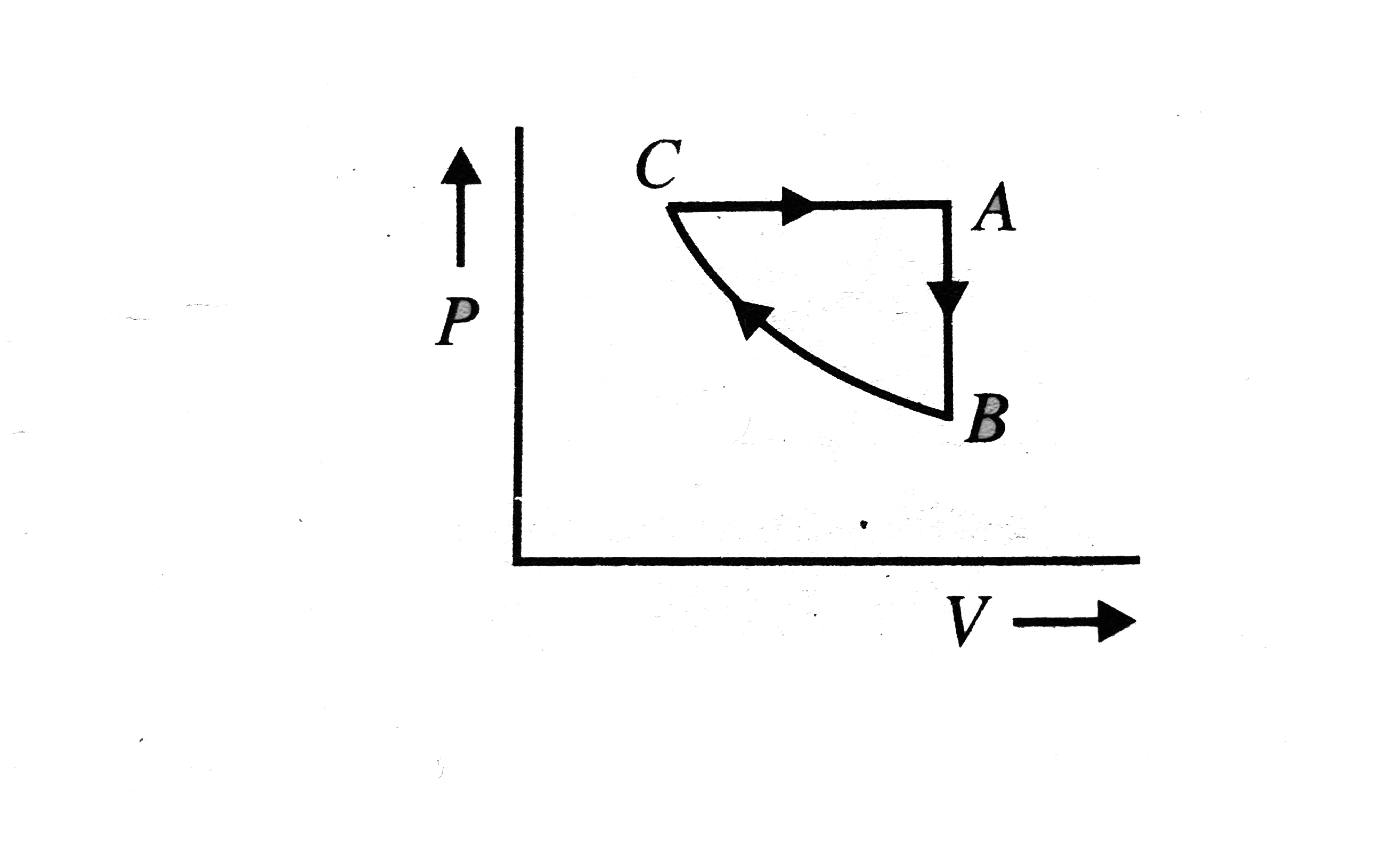 View Solution
View SolutionQuestion 62
A cylinder of ideal gas is closed by an 8kg movable piston of area 60cm2. The atmospheric pressure is 100kPa. When the gas is heated form 30∘C to 100∘C, the piston rises 20 cm. The piston is then fastened in the place and the gas is cooled back to 30∘C. If ΔQ1 is the heat added to the gas during heating and ΔQ2 is the heat lost during cooling, find the difference.View SolutionQuestion 64
A cylindrical chamber A of uniform cross section is divided into two parts X and Y by a movalbe piston P which can slide without friction inside the chamber. Initially part X contains 1mol of a monochromatic gas and Y contains 2mol of a diatomic gas, and the volumes of X and Y are in the ratio 1:2 with both parts X and Y being at the same temperature T. Assuming the gases to be ideal, the work W that will be done in moving the piston slowly to the position where the ratio of the volumes of X and Y is 2:1 will be
 View Solution
View SolutionQuestion 65
An ideal gas (1 mol, monatomic) is in the intial state P (see Fig.) on an isothermal A at temperature T0. It is brought under a constant volume (2V0) process to Q which lies on an adiabatic B intersecting the isothermal A at (P0,V0,T0). The change in the internal energy of the gas during the process is (in terms of T0)(22/3=1.587)
 View Solution
View SolutionQuestion 70
A thermodynamic process is shown in Fig. The pressures and volumes corresponding to some points in the figure are
PA=3×104Pa VA=2×10−3m3
PB=8×104Pa VD=5×10−3m3
In the process AB 600J of heat is added to the system. The change in internal energy of the system in the process AB would be
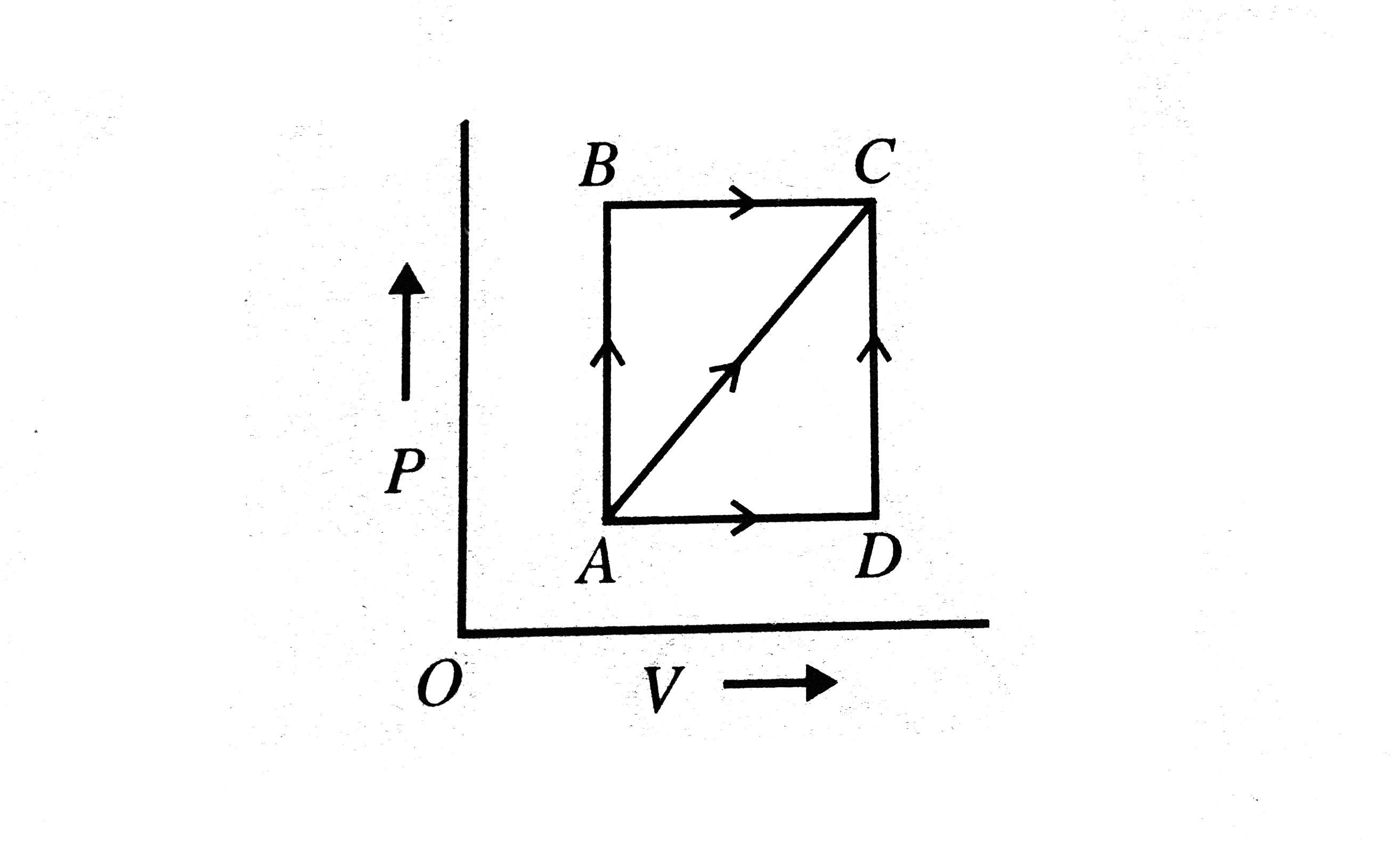 View Solution
View SolutionQuestion 71
Carbon monoxide is carried around a closed cyclic processes abc, in which bc is an isothermal process, as shown in Fig. The gas absorbs 7000J of heat as its temperature is increased from 300K to 1000K in going from a to b. The quantity of heat ejected by the gas during the process ca is
 View Solution
View SolutionQuestion 72
An ideal gas is taken through a cyclic thermodynamic process through four steps. The amounts of heat involved in these steps are Q1=5960J,Q2=−5585J,Q3=−2980JandQ4=3645J, respectively. The corresponding quantities of work involved are W1=2200J,W2=−825J,W3=−1100JandW4 respectively.
(1) Find the value of W4.
(2) What is the efficiency of the cycle View SolutionQuestion 75
Two identical containers A and B with frictionless pistons contain the same ideal gas at the same temperature and the same velocity V. The mass of the gas in A is mA, and that in B is mB. The gas in each cylinder is now allowed to expand isothermally to the same final volume 2V. The changes in the pressure in A and B are found to be ΔPand1.5ΔP respectively. ThenView SolutionQuestion 86
The equation of state for a gas is given by PV=ηRT+αV, where η is the number of moles and α a positive constant. The intinal pressure and temperature of 1 mol of the gas contained in a cylinder is P0 and T0, respectively. The work done by the gas when its temperature doubles isobarically will beView SolutionQuestion 87
A sound wave passing volume 1m3 is divided into two equal compartments by a partition. One of these compartments contains an ideal gas at 300K. The other compartment is vacuum. The whole system is thermally isolated from its surroundings. The partition is removed and the gas expands to occupy the whole volume of the container. Its temperature now would beView SolutionQuestion 88
A container of volume 1m3 is divided into two equal parts by a partition. One part has an ideal gas at 300K and the other part is vacuum. The whole system is thermally isolated from the surroundings. When the partition is removed, the gas expands to occupy the whole volume. Its temperature will now be .......View SolutionQuestion 92
Two cylinders A and B fitted with pistons contain equal amounts of an ideal diatomic gas at 300K. The piston of A is free to move, while that B is held fixed. The same amount of heat is given to the gas in each cylinder. If the rise in temperature of the gas in A is 30K, then the rise in temperature of the gas in B is View SolutionQuestion 93
Carbon monoxide is carried around a closed cyclic processes abc, in which bc is an isothermal process, as shown in Fig. The gas absorbs 7000J of heat as its temperature is increased from 300K to 1000K in going from a to b. The quantity of heat ejected by the gas during the process ca is
 View Solution
View SolutionQuestion 102
Three samples A, B and C of the same gas (γ=1.5) have equal volumes and temperatures. The volume of each sample is doubled, the process being isothermal for A, adiabatic for B and isobaric for C. If the final pressures are equal for the three samples, Find the ratio of the initial pressures. View SolutionQuestion 107
Two moles of an ideal gas at temperature T0=300K was cooled isochorically so that the pressure was reduced to half. Then, in an isobaric process, the gas expanded till its temperature got back to the initial value. Find the total amount of heat absorbed by the gas in the processsView SolutionQuestion 112
One mole of an ideal gas at pressure P0 and temperature T0 is expanded isothermally to twice ist volume and then compressed at constant pressure to (V0/2) and the gas is brought bac to original state by a process in which PαV (pressure is direclty proportional to volume). The correct temperature of the process isView SolutionQuestion 122
A certain balloon maintains an internal gas pressure of P0=100kPa until the volume reaches V0=20m3. Beyond a volume of 20m3, the internal pressure varies as P=P0+2k(V−V0)2 where P is in kPa. V is n m3 and k is a constant (k=1kPa/m3). Initially the balloon contains helium gas at 20∘C, 100kPa with a 15m3 volume. The balloon is then heated until the volume becomes 25m2 and the pressure is 159 kPa. Assume ideal gas behaviour for helium. The work done by the balloon for the entire process in kJ isView SolutionQuestion 123
A spherial balloon contains air at temperature T0 and pressure P0. The balloon material is such that the instantaneous pressure inside is proportional to the square of the diameter. When the volume of the balloon doubles as a result of heat transfer, the expansion follows the law View SolutionQuestion 136
Two cylinders fitted with pistons and placed as shown, connected with string through a small tube of negligible volume, are filled with gas at pressure P0 and temperature T0. The radius of smaller cylinder is half of the other. If the temperature is increased to 2T0, find the pressure if the piston of bigger cylinder moves towards left by 1 metre ?
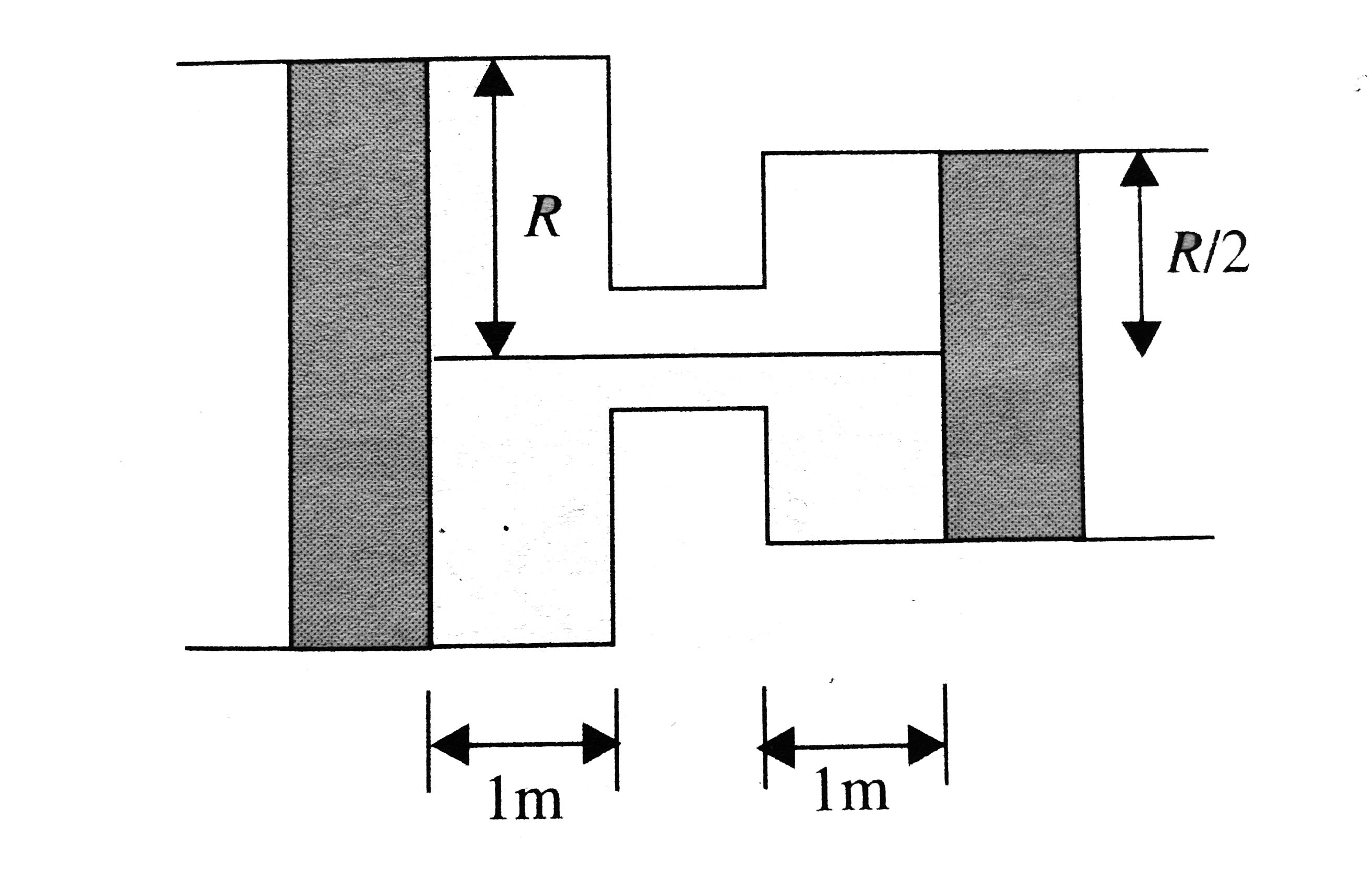 View Solution
View SolutionQuestion 138
Two identical containers A and B having volume of ideal gas at the same temperature have mass of the gas as mA and mB respectively. 2mA=3mB. The gas in each cylinder expand isothermally to double its volume. If the change in pressure in A is Δp, find the change in pressure in B:View Solution



